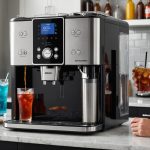Importance of Effective Inventory Management in High-Traffic Restaurants
Inventory Management is a cornerstone of Restaurant Efficiency, profoundly affecting everything from order accuracy to customer satisfaction. High-traffic restaurants must grapple with a constant influx of orders, making real-time data tracking an imperative component. Without it, a small oversight can spiral into significant Waste Reduction challenges, leading to both financial loss and diminished customer experience.
The relationship between inventory management and operational efficiency is critical. Efficient management systems ensure the right products are available when needed, minimising delays and maintaining a restaurant’s pace and flow. For instance, having a real-time alert system can notify staff the moment stock levels drop below a specified threshold, allowing for swift adjustments and replenishments.
Topic to read : Creating a Robust Health and Safety Blueprint for Your Commercial Kitchen: Essential Steps Unveiled
Poor inventory practices can lead to wasted resources, impacting the bottom line and operational success. Over-ordering results in spoilage, while understocking can lead to lost sales and unsatisfied customers. Hence, employing efficient techniques is not just beneficial, but essential for survival in high-traffic environments.
Leveraging technology like barcode scanning or RFID tags enhances tracking accuracy, enabling kitchen staff to align closely with current demand. This ensures that waste is reduced, and resources are optimally utilized.
Also read : Crafting the Perfect Café: A Comprehensive Guide to Designing a Stunning and Practical Space
Stock Tracking Techniques
Effective Stock Tracking is essential for maintaining consistency in restaurants with High-Volume Sales. Implementing real-time stock tracking allows for immediate adjustments, ensuring that inventory levels meet current demands. This process minimizes Inventory Control issues that could disrupt a restaurant’s operations.
One fundamental method is the First-In, First-Out (FIFO) system. By organising and using the oldest stock first, restaurants can reduce spoilage and make efficient use of supplies. FIFO ensures that perishable items are used in a chronological order, reducing waste and preserving quality.
Advanced tools and software facilitate efficient stock tracking in busy restaurant settings. Many rely on technology that integrates with Point of Sale (POS) systems, offering real-time data on sales and inventory status. This connectivity ensures operators have instant access to stock levels, assisting in strategic decision-making and maintaining high standards of Inventory Control.
Moreover, automated alerts when stock reaches critical levels can avert potential shortages or excesses. These solutions create a seamless system for managing the rapid pace of high-traffic environments, safeguarding against unnecessary disruptions that may arise from mismanaged stock.
Supplier Management Strategies
Supplier Relationships are the backbone of reliable service delivery in restaurants, crucial for maintaining consistent product availability and quality. Success hinges on building strong, dependable relationships with suppliers. A structured approach to managing these relationships can avert supply chain disruptions and ensure smooth operations in high-traffic environments.
Procurement Processes must be designed to evaluate supplier performance scrupulously. It is essential to regularly assess factors such as delivery timelines, consistency in product quality, and supplier responsiveness. This diligent evaluation facilitates swift corrective actions if a supplier’s reliability wanes.
Engaging in adept Vendor Negotiation is imperative for managing costs effectively. Thorough market research allows restaurants to leverage industry standards and negotiate terms that align with their financial objectives. These negotiations may cover pricing, delivery terms, and bulk order discounts, providing cost benefits and competitive pricing advantage.
To strengthen supplier reliability, establish transparent communication channels and cultivate long-term partnerships. Ensure mutual understanding and clearly articulate expectations. Implementing a strategic supplier management framework helps maintain a balance between cost-efficiency and high-quality supplies, which is vital for the restaurant’s operational efficiency and service consistency.
Demand Forecasting in a High-Traffic Environment
In bustling restaurant environments, Demand Forecasting is a vital component that ensures seamless operations. By analysing historical sales data, restaurants can accurately predict future inventory needs, ensuring supply aligns with demand peaks and troughs. Accurate forecasts prevent both overstock and stockouts, optimising order accuracy and resource allocation.
Sales Analysis plays a crucial role in identifying demand patterns. By understanding sales trends during various times and occasions, restaurants can refine their Inventory Planning. Seasonal items, for instance, may require adjustments to stock levels based on past performance.
Several factors influence demand fluctuations, including local events, weather changes, and shifting consumer preferences. Recognising these can aid in crafting nimble strategies to adapt inventory orders accordingly. Advanced tools and software solutions now offer predictive analytics to further enhance forecasting accuracy.
Methodologies such as machine learning can elevate demand accuracy, allowing restaurants to adjust on the fly. By integrating past sales information with predictive algorithms, managers garner insights to preemptively address potential shortages and surplus issues. Precise forecasting underpins well-coordinated inventory management, sustaining customer satisfaction and operational resilience in high-traffic settings.
Technology Integration for Inventory Management
In the realm of inventory management, leveraging technology solutions plays a crucial role in elevating restaurant efficiency. Integrating technology into existing systems automates tasks and enhances accuracy, streamlining operations to focus more on customer satisfaction. These solutions offer benefits like real-time tracking and efficient stock adjustments, significantly aiding in waste reduction.
Inventory automation simplifies replenishment processes, ensuring optimal stock levels without manual intervention. Automated systems provide real-time alerts on low inventory, reducing the risk of stockouts and over-ordering. By synchronising with Point of Sale (POS) systems, these tools provide a comprehensive overview of sales and inventory, aiding strategic planning and decision-making.
For instance, RFID tags and barcode scanners allow for swift, error-free inventory checks. Implementing these tools minimises human error and reduces labour costs, directly impacting profitability.
A notable example includes a restaurant that integrated a digital inventory solution, resulting in a 30% reduction in food waste and a 40% increase in ordering accuracy. Such efficiency tools underscore the importance of adopting technologically advanced solutions for sustainable business practices. By embracing technology, restaurants can achieve a competitive edge, ensuring effective and efficient resource utilisation.
Best Practices for Reducing Waste
Waste reduction is a critical aspect of fostering restaurant sustainability. Effective strategies to minimise waste can significantly impact both financial health and environmental responsibility. By identifying waste across operations, restaurants can streamline processes and improve efficiency.
Optimisation strategies begin with staff training. Educating the team on waste reduction not only increases awareness but also promotes consistent practices. Employees should be engaged to understand their role in minimising waste through daily actions, whether it involves careful portioning or vigilant stock rotation.
Another key approach involves utilising excess inventory efficiently. Instead of discarding excess ingredients, creative menu planning can help incorporate them into daily specials, reducing spoilage and resource wastage.
Implementing measurement tools is also valuable. Techniques such as waste audits—whereby the origin of waste is identified—help pinpoint problematic areas. Using these insights, restaurants can redefine processes and manage inventory better.
Lastly, collaborating with local organisations to donate surplus food supports community initiatives and bolsters the restaurant’s reputation for sustainability. Through these best practices, restaurants can embrace waste reduction, aligning operations with environmental goals while enhancing profitability.
Visual Tools and Resources
In the dynamic environment of restaurant management, leveraging Visual Tools streamlines inventory management. Creating visual aids like charts and checklists simplifies tracking and ensures critical information is easily accessible. These tools help staff to monitor stock levels, ensuring that nothing falls through the cracks during busy shifts.
Inventory templates are practical resources for restaurants of any size. They offer a structured approach to maintain an accurate inventory count, which ensures operational precision. Pre-designed templates available online can cater to specific needs, allowing for customisation that fits unique restaurant requirements.
When introducing visual aids, consider incorporating checklists for daily, weekly, or monthly inventory tasks. These promote consistency and accountability across the team, enabling efficient operations. Visualisation makes it easier to identify areas for improvement and optimise stock levels effectively.
To support continued improvement, consider accessing guides and resources focused on inventory management. Resources can offer valuable insights into innovative practices and industry benchmarking, facilitating a well-informed strategy. By integrating visual tools and tapping into available resources, restaurants can enhance their inventory systems, empowering them to achieve sustained success in fast-paced environments.






